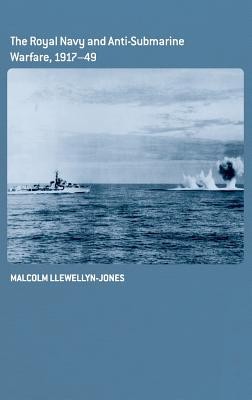
- Išsiųsime per 10–14 d.d.
- Autorius: Malcolm Llewellyn-Jones
- Leidėjas: Routledge
- ISBN-10: 0415385326
- ISBN-13: 9780415385329
- Formatas: 16.2 x 24.1 x 1.9 cm, kieti viršeliai
- Kalba: Anglų
- Extra -15 % nuolaida šiai knygai su kodu: ENG15
The Royal Navy and Anti-Submarine Warfare, 1917-49 (el. knyga) (skaityta knyga) | knygos.lt
Atsiliepimai
Aprašymas
An essential new account of how anti-submarine warfare is conducted, with a focus on both historic and present-day operations.
This new book shows how until 1944 U-boats operated as submersible torpedo craft which relied heavily on the surface for movement and charging their batteries. This pattern was repeated in WWII until Allied anti-submarine countermeasures had forced the Germans to modify their existing U-boats with the schnorkel. Countermeasures along also pushed the development of high-speed U-boats capable of continuously submerged operations.
This study shows how these improved submarines became benchmark of the post-war Russian submarine challenge. Royal Navy doctrine was developed by professional anti-submarine officers, and based on the well-tried combination of defensive and offensive anti-submarine measures that had stood the press of time since 1917, notwithstanding considerable technological change.
This consistent and holistic view of anti-submarine warfare has not been understood by most of the subsequent historians of these anti-submarine campaigns, and this book provides an essential and new insight into how Cold War, and indeed modern, anti-submarine warfare is conducted.
EXTRA 15 % nuolaida su kodu: ENG15
Akcija baigiasi už 4d.15:12:53
Nuolaidos kodas galioja perkant nuo 10 €. Nuolaidos nesumuojamos.

- Autorius: Malcolm Llewellyn-Jones
- Leidėjas: Routledge
- ISBN-10: 0415385326
- ISBN-13: 9780415385329
- Formatas: 16.2 x 24.1 x 1.9 cm, kieti viršeliai
- Kalba: Anglų Anglų
An essential new account of how anti-submarine warfare is conducted, with a focus on both historic and present-day operations.
This new book shows how until 1944 U-boats operated as submersible torpedo craft which relied heavily on the surface for movement and charging their batteries. This pattern was repeated in WWII until Allied anti-submarine countermeasures had forced the Germans to modify their existing U-boats with the schnorkel. Countermeasures along also pushed the development of high-speed U-boats capable of continuously submerged operations.
This study shows how these improved submarines became benchmark of the post-war Russian submarine challenge. Royal Navy doctrine was developed by professional anti-submarine officers, and based on the well-tried combination of defensive and offensive anti-submarine measures that had stood the press of time since 1917, notwithstanding considerable technological change.
This consistent and holistic view of anti-submarine warfare has not been understood by most of the subsequent historians of these anti-submarine campaigns, and this book provides an essential and new insight into how Cold War, and indeed modern, anti-submarine warfare is conducted.




Atsiliepimai